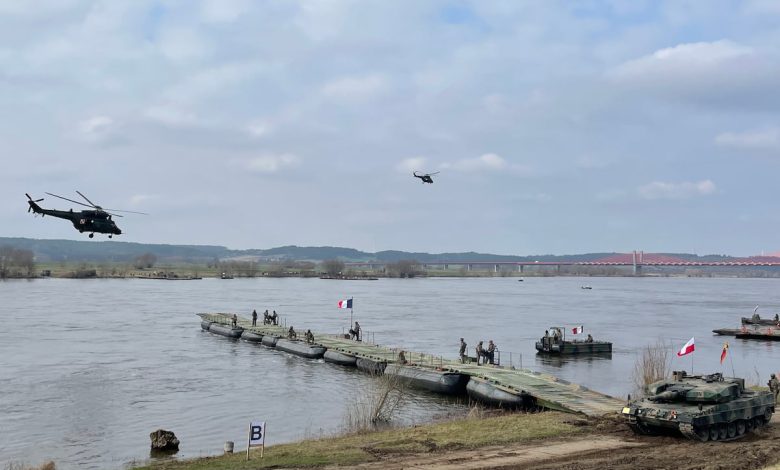Germany, UK tap GDELS to build new floating bridges for frontline ops

BERLIN — Germany and the United Kingdom will jointly procure a new generation of rapidly deployable floating bridges, the German military announced on Thursday.
Dubbed Schwimmschnellbrücke 2 in German, the vehicles will be constructed by General Dynamics European Land Systems. They act as self-propelled all-wheel-drive vehicles that can either be daisy-chained to bridge bodies of water or used as ferries to move equipment from one shore to another. The UK has dubbed the project TRITON.
The Bundeswehr, Germany’s armed forces, said that the new vehicles, created through a bilateral project officially called “Wide Wet Gap Crossing,” would replace existing German systems such as the M3 bridge and ferry system as well as the German military’s existing folding bridges. Compared to its predecessor, the new equipment will have better off-road capabilities and maneuverability, the German armed forces said.
The new system will be interoperable with the existing gear used by partner countries and will be compatible with the pontoon family of temporary bridges used by NATO countries, too.
The new vehicles will be deployed to the joint British-German multinational pioneer bridging battalion 130 based in Minden, Germany, and will fulfill a key NATO role. The bridges are being procured through the Organisation for Joint Armament Cooperation, an intergovernmental organisation that was set up in the 90s to facilitate multilateral defense procurements across several Western European countries.
The procurement will be carried out jointly by Berlin and London “to strengthen German-British cooperation,” the Bundeswehr’s office for materiel said.
Germany will pay €53 million ($61 million) for the bridges, with an option to place an additional €331 million ($383 million) in further orders. Additional contracts related to the procurement amount to a total of €104 million ($120 million), the Bundeswehr said in a statement. The U.K. had not made a corresponding announcement at the time of writing.
The German-British buy continues a larger trend of the U.K. re-engaging with the European mainland since Russia’s full-scale invasion of Ukraine. London has since played a key role in backing Kyiv’s defense, and has renewed engagement in multilateral projects with continental European partners, mending rifts that emerged as a consequence of the U.K.’s exit from the EU in 2020.
The procurement follows the UK-Germany Trinity House Agreement from October 2024 and a Letter of Intent signed in April 2025 reaffirming bilateral defense cooperation between the two countries.
Linus Höller is Defense News’ Europe correspondent and OSINT investigator. He reports on the arms deals, sanctions, and geopolitics shaping Europe and the world. He holds a master’s degrees in WMD nonproliferation, terrorism studies, and international relations, and works in four languages: English, German, Russian, and Spanish.







